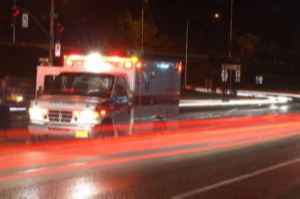
Coordinator –

Primary Instructor – Devin Callarman, CCEMT-P, FTO, AAS;
Medical Director – Dr. Amanda Detar, D.O

Course Description
The paramedic program covers all emergency medical concepts and techniques currently considered to be within the responsibilities of the paramedic (EMT-P) providing emergency care in a pre-hospital setting as set forth by the Bureau of Emergency Medical Services of the State of Missouri. PLTC is accredited by the Commission on Accreditation of Allied Health Education Programs (www.caahep.org) upon the recommendation of the Committee on Accreditation of Educational Programs for the Emergency Medical Services Professions (CoAEMSP).
Overview of Paramedic Program
The Paramedic Education Program runs approximately twelve months in duration, consisting of a didactic (classroom and lab) phase, a clinical phase, and a field internship. Students are provided with a challenging, comprehensive education with true field and hospital experience. Students will complete a total of 1,250 “clock hours” for all three phases.
Curriculum |
Role/Responsibilities |
Injury Prevention Medical/Legal issues, Ethics |
Pharmacology |
Vascular Access/Medication Administration |
Human Development |
Patient Communication & Documentation |
Airway Management and Ventilation |
Patient History/Physical Exam/Patient Assessment |
Critical Thinking & Decision Making |
Trauma Systems/Mechanism Injury |
Bleeding & Shock |
Soft-Tissue/Burns |
Injuries |
Respiratory |
Cardiac Rhythm ID |
Obstetrics, Pediatrics, Geriatrics |
ACLS & PALS |
Prerequisites/Requirements
Attend admission workshop
Be 18 years of age
Have High school diploma or equivalent
Licensed as an Emergency Medical Technician with experience
Personal and Physical Skills
Personal skills include sincere interest in people, ability to make judgments and decisions, work under stress, oral and written communications, meeting strict standards, and deal with people.
Physical activities include lifting, carrying, pushing or pulling, standing for long periods, reaching, using hands, talking, hearing, seeing clearly up close and walking.
Related Occupations
There are some opportunities for advancement for those paramedics who want to continue working as medical professionals, but in some other capacity in the industry. Their training and experience qualify them to work as instructors, dispatchers, supervisors, operations managers, administrative directors, or executive directors of emergency services.
Salary Range
The average salary for entry-level Paramedic is $30,000 (15.63 per hour) to an average of $50,000 ($26.04 per hour) for experienced workers.
Description of Profession
The paramedic provides advanced pre-hospital emergency medical care under medical command authority to acutely ill or injured patients and/or transports patients by ambulance or other emergency vehicle. The paramedic assumes the role of the leader of patient care, and must manage not only the patient, but the scene at which care is taking place. The paramedic might perform other medical services under medical direction outside the hospital environment. The paramedic should be able to:
Demonstrate an awareness of abilities and limitations.
Have the ability to relate to people.
Have the capacity to make rational patient care decisions under stress.
Communicate effectively both verbally and in writing.
Class of 2020- 2021
NREMT/State Written Exam: 75%
Retention: 75%
Positive (Job) Placement: 75%
Class of 2021 -2022
NREMT/State Written Exam: 80%
Retention: 83.4%
Positive (Job) Placement: 80%
Class of 2022-2023
NREMT/State Written Exam: 100%
Retention: 100%
Positive (Job) Placement: 100%

